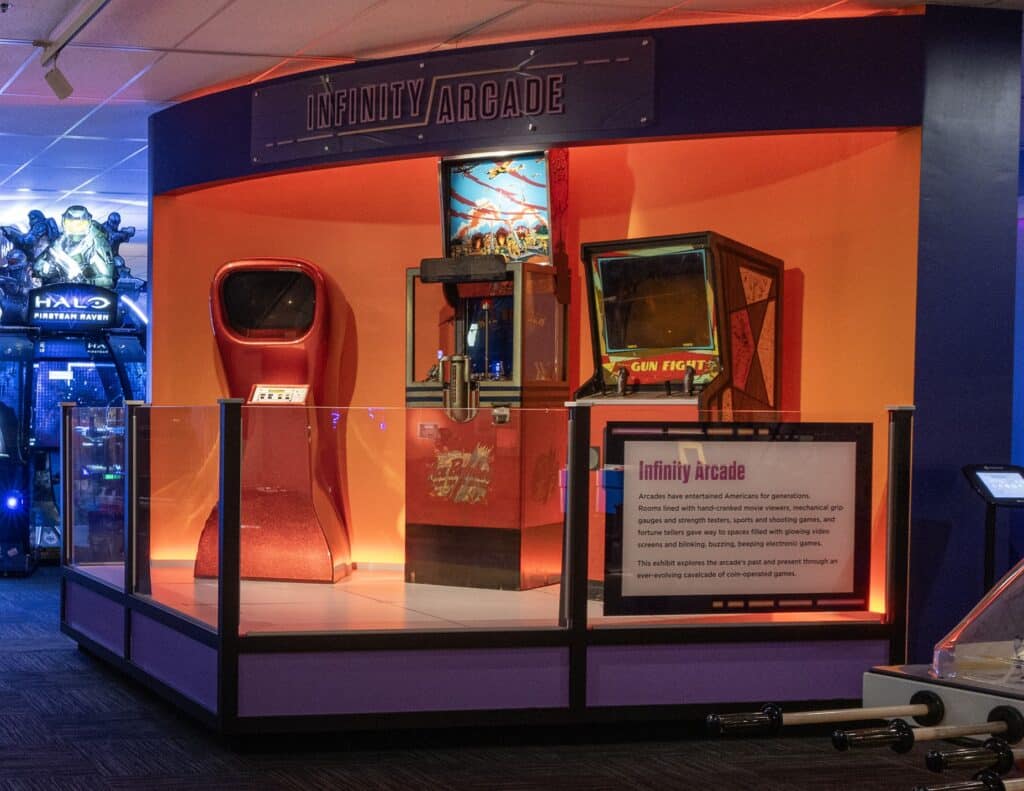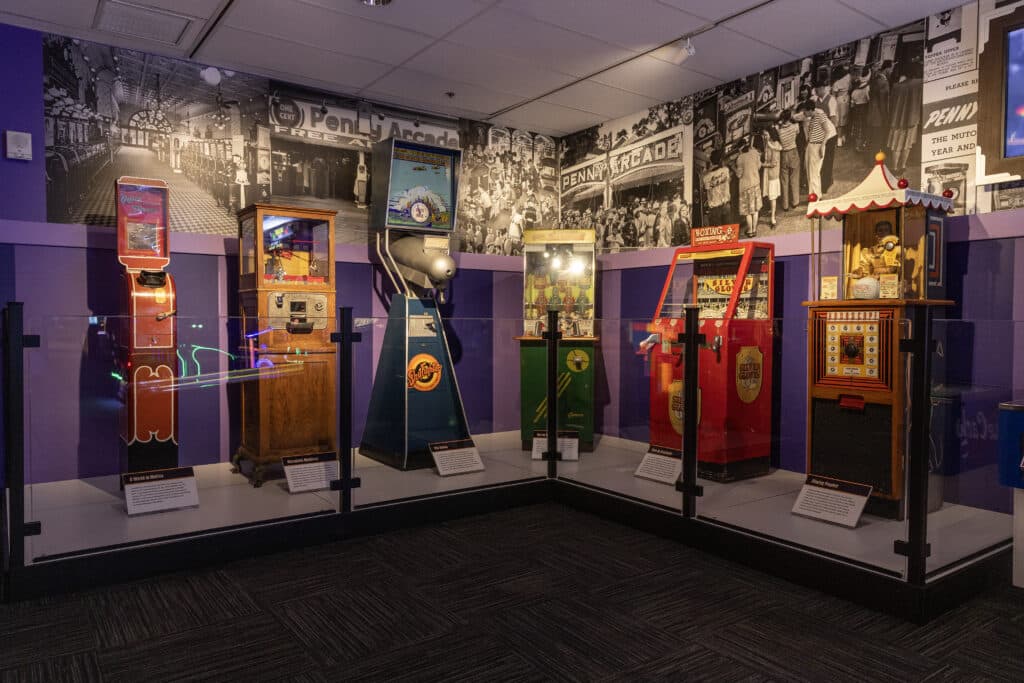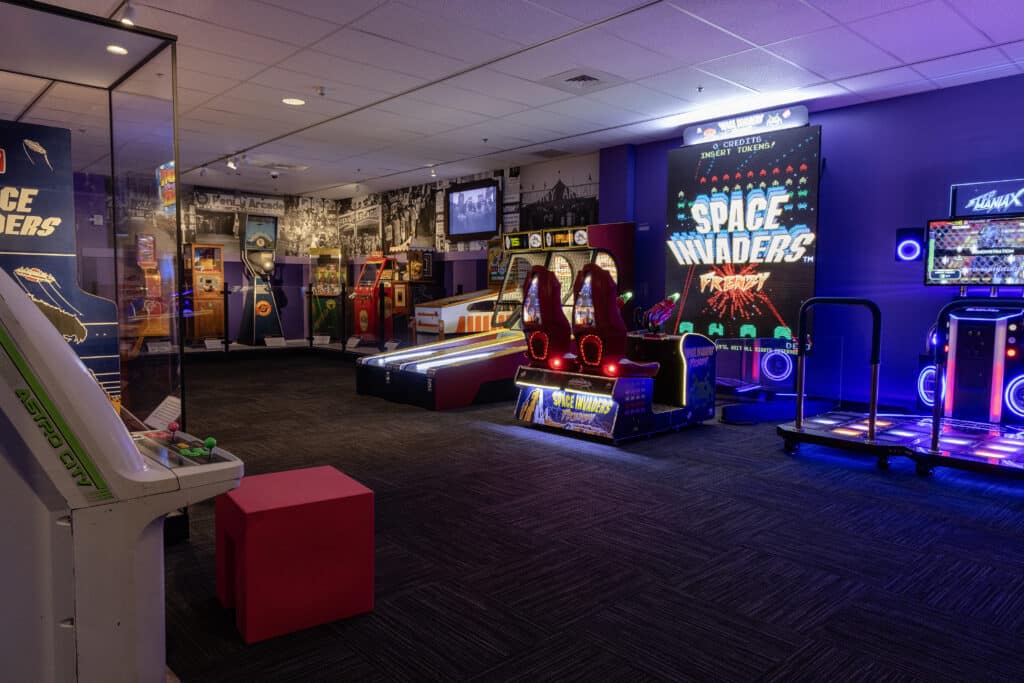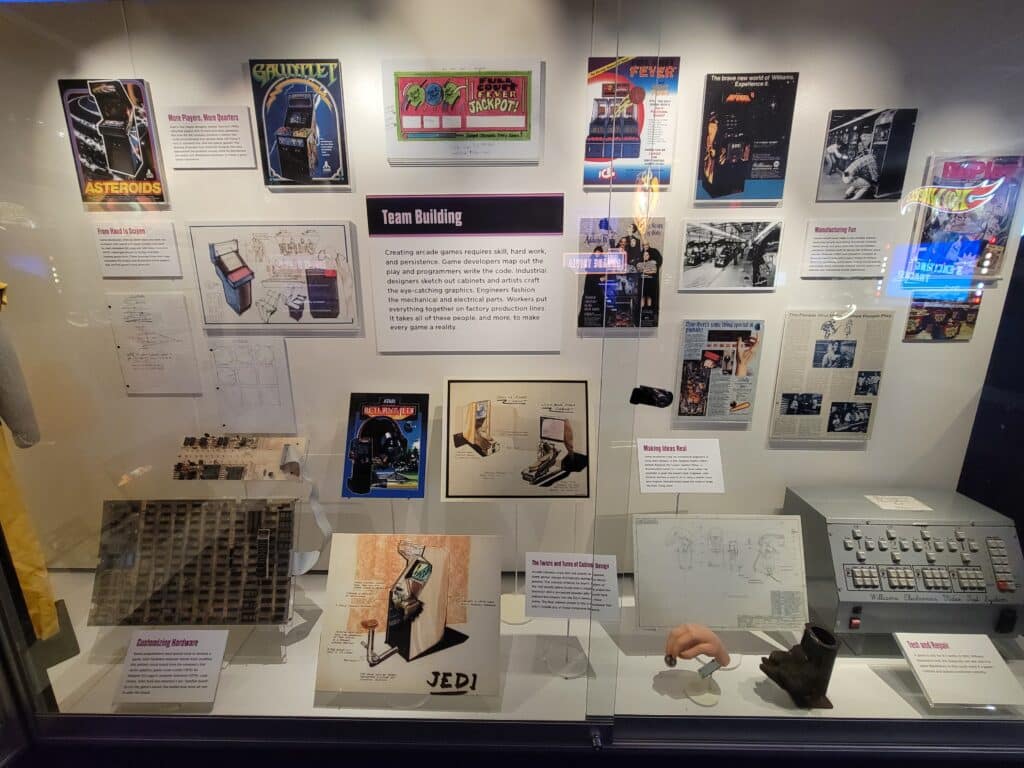
Back in 2010, The Strong opened eGameRevolution, the museum’s first permanent exhibit to focus on the history of video games. For more than a decade, that exhibit informed and delighted millions of museum guests. We recognized early on that the exhibit’s arcade was a hit with guests who loved playing and learning more about coin-operated video games. So, when the museum opened its ESL Digital Worlds: High Score and Level Up exhibits as part of its 90,000-sq. ft. expansion in 2023, we started developing a new exhibit that would transform eGameRevolution into a space dedicated entirely to arcade games. In the fall of 2025, The Strong opened Infinity Arcade, an exhibit that invites guests to explore more than a century of arcade history. But what can you expect to see and do in Infinity Arcade?
Arcade Ancestors on Display

Beginning in the late 19th century, Americans dropped coins into games that tested their skill and pressed their luck in a seemingly endless variety of ways. Today, many of us forget that the newer electronic arcade games we encounter in modern arcades and family entertainment centers trace their origins back to earlier forms of play, and earlier arcade games. Guests visiting Infinity Arcade can learn more about this history through a series of artifact displays featuring examples of early coin-operated countertop games and larger shooting, athletic, fortune telling, and pinball games. For example, these displays include smaller, countertop trade stimulators (or games used by retailers to encourage the sale of cigars, gum, or other items) like The Bicycle (about 1890s), which capitalized on the popularity of cycling and asked players to spin the bike’s wheels for a chance to win a prize. Also on display are larger arcade cabinets like Sky Fighter (1940), a shooting game that surged in popularity during World War II by challenging players to take down enemy planes.
Arcade Icons and New Classics for Play

As a museum dedicated to all things play, we know that playing is one of the best ways to learn. That’s why a video game arcade period room anchors the exhibit, offering guests opportunities to play original arcade games from the 1970s, 1980s, and 1990s. Although game titles are rotated frequently, guests are likely to see and play iconic arcade video games like the rock blaster Asteroids (1979), maze runner Pac-Man (1980), space shooter Defender (1981), and the two-player brawler Street Fighter II (1991). But the exhibit is also filled with many other kinds of arcade games, including examples of electromechanical or mechanical action arcade games like the helicopter flying game Whirly Bird (1969), the classic bubble hockey game Chexx, and the bowling game Skee-Ball. More recent arcade video games include the massive, four-player shooter Halo: Fire Team Raven (2018); the six-player, adrenaline-fueled racer Hot Wheels: King of the Road (2020), and the exhilarating, four-player basketball game NBA Superstars (2024).
While many of the games throughout the museum are free of charge, the arcade games in Infinity Arcade require purchased tokens. The funds collected from the sale of tokens are used to care for these original artifacts and keep them running for future generations. Tokens themselves have played such an important role in the history of arcades that the exhibit even includes a display of 50 tokens collected from arcades throughout the United States.

Thematic Cases and Rare Artifacts
The exhibit also features a series of displays with rare or one-of-a-kind artifacts and that explore topics such as how arcade games are made, moral panics (or widespread and often excessive public fears) surrounding arcades and arcade games, how arcade games entered the home in the forms of board game adaptations and other tabletop electronic games, and Pac-Man as a mass cultural phenomenon. For example, the case focused on making arcade games features a display of original designer notes, the first prototype printed circuit board, and a prototype arcade cabinet for Atari’s all-time bestselling coin-op game, Asteroids. The display also includes an engineering drawing of The Addams Family pinball’s The Thing playfield toy and one of the original metal rotational molds used to manufacture the game’s plastic Thing hand. The case about arcade moral panics features original video from game industry promotions and news programs produced at the height of the arcade craze of the early 1980s.
Arcade Video Game History Timeline
For guests interested in a chronological overview, a large graphical timeline surveys the first 50 years of arcade video game history. From the first arcade video game, the dueling space shooter Computer Space (1971) to the modern, environmental shooters Jurassic Park Arcade (2015) and Halo: Fire Team Raven (2018), guests can see how coin-operated video games have evolved over five decades. After spending some time in Infinity Arcade, guests may also want to test their knowledge of coin-op game history by playing a custom arcade trivia game. Can you beat the latest high score?
There’s so much more to discover for yourself, but it’s easy to see how you could spend hours playing and learning about the history of the arcade and the significant role that coin-operated games have played in American life, culture, and play for more than a century.


